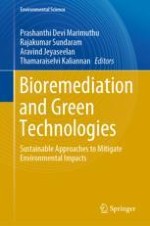2021 | OriginalPaper | Chapter
Case Experience on WIN WIN Approach Towards Industrial Pollution Control-Economic and Environmental Efficacy of Cleaner Technology in Select Cement Industry in Tamil Nadu
Authors : X. Agnello J. Naveen, S. Boopathi, A. Arivoli
Published in: Bioremediation and Green Technologies
Publisher: Springer International Publishing
Activate our intelligent search to find suitable subject content or patents.
Select sections of text to find matching patents with Artificial Intelligence. powered by
Select sections of text to find additional relevant content using AI-assisted search. powered by
